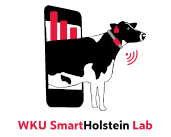Genomic testing has become a routine breeding and management tool on many Holstein farms around the country. DNA samples are taken shortly after birth and quickly shipped to the genotyping lab. Pedigree data is gathered, submitted and shipped for verification. Upon arrival at the CDCB, the pedigree data is used in several additional steps. Two of these steps have recently been enhanced:
- Use of pedigree data to calculate an animal’s relationship to the breed.
Enhancement: Exact Estimated Future Inbreeding (EFI) is now used
- Use of pedigree data to calculate an animal’s primary breed and heterosis percentage.
Enhancement: Immediate recalculation of heterosis is now used
An animal’s relationship to the breed is used to calculate the Estimated Future Inbreeding (EFI). A lower EFI means future offspring will be less inbred and a higher EFI means future offspring will be more inbred. The PTAs are then adjusted up or down, giving credit to animals that create less inbreeding and deducting value from the animals creating more inbreeding. Adjusting the PTAs for future inbreeding is an important feature in managing long-term genetic diversity within the Holstein breed.
Previously, new animals coming into the genetic evaluation system after the full genetic update in April, August and December received an approximate EFI until the exact EFI could be calculated at the time of the next full genetic update. This procedure was changed in June whereby new animals, whose parents were evaluated in April, are now receiving an exact EFI.
Previously, at the time of initial processing, animals with a wrong breed code or missing pedigree data would be assigned a default heterosis value of 100%. Again, at the next full genetic update, the complete pedigree is used to calculate the precise heterosis value. This step was modified in June, whereby the precise heterosis value is immediately updated when the pedigree data arrived.
When comparing ALL herdbook animals, we see an 18-point increase in TPI because of the exact EFI being slightly lower than predicted. This small amount should not have much of an effect on the breeding and selection decisions for most commercial heifers. A total release of all genomic predictions for animals evaluated in May 2018 is not recommended.
Amongst the top 200 High Ranking Genomic Females from May, the average TPI change was +14 TPI points or +13 NM$, when looking at the June evaluations. The change from an approximate EFI to exact value resulted in the EFI being 1% to 2% lower for fifty heifers, subsequently raising their TPI by 30 to 60 points. Five heifers had a change in their percent heterosis from 100% to 0% causing a drop of 114 TPI points for them. A revised May 2018 High Ranking Genomic Females list, using June 2018 genomic predictions, is being posted on the HAUSA website. The new May 2018 List includes a total of 224 heifers: all 200 heifers that were on the original May List plus 24 additional heifers from May that now qualify for the Top 200 list based upon the new June results.
The revised May 2018 High Ranking Genomic Female list (utilizing June results) will allow the elite heifers (first evaluated in May) to be fairly compared to the heifers from April and June. Posting of this list on the HAUSA website provides open and transparent information on these elite Holstein heifers. |



